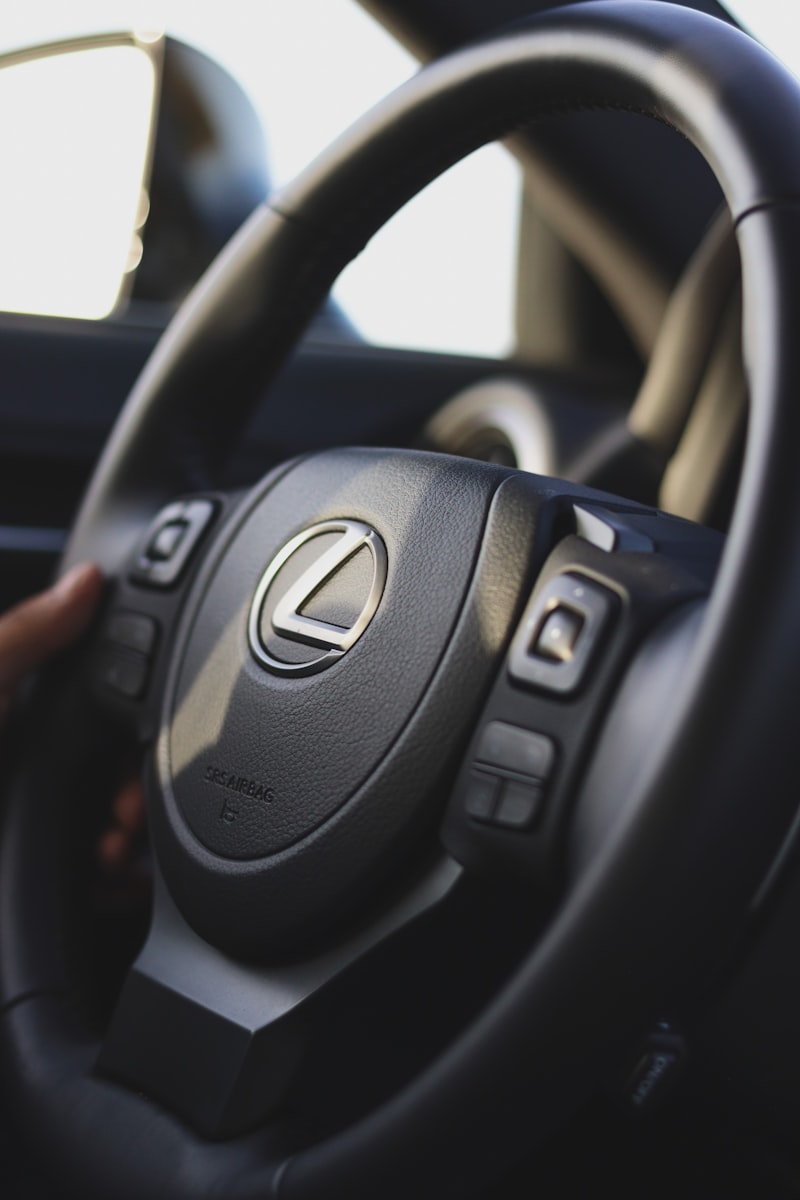Are you tired of dealing with air suspension system problems in your vehicle? If so, you’re not alone. Many car owners face these issues and find themselves frustrated by the inconvenience and potential safety risks involved. In this article, we’ll explore four common air suspension system problems and provide insights on how to address them effectively.
-
Air Leaks: One prevalent issue with air suspension systems is air leaks. Over time, the rubber seals and air springs in the system can deteriorate, leading to air leakage. This results in a loss of pressure, causing an uneven ride or even a sagging vehicle. To tackle this problem, it’s crucial to inspect the air lines, connections, and components regularly. Ensure that all fittings are secure and replace any worn-out parts promptly.
-
Faulty Compressor: The compressor plays a vital role in maintaining optimum air pressure in the suspension system. A faulty compressor can lead to inadequate air supply, resulting in a bumpy ride and reduced suspension performance. If you notice unusual noises coming from under your vehicle or if the suspension fails to adjust properly, it may indicate a compressor issue. Seek professional assistance to diagnose and repair or replace the faulty compressor.
-
Height Sensor Problems: Air suspension systems utilize height sensors to monitor the vehicle’s position and adjust accordingly. However, these sensors can encounter problems, such as calibration errors or physical damage. When the height sensors malfunction, it can lead to incorrect ride height adjustments, causing an imbalanced and uncomfortable driving experience. It’s advisable to have the sensors inspected and recalibrated if needed by a qualified mechanic.
-
Electronic Control Module (ECM) Failure: The ECM controls various aspects of the air suspension system, including pressure regulation and ride height adjustments. If the ECM malfunctions or fails, it can disrupt the entire system’s functionality. Signs of ECM failure include warning lights on the dashboard or a complete inability to adjust the suspension settings. In such cases, it’s essential to have the ECM diagnosed and repaired or replaced by a skilled technician.
Addressing common air suspension system problems promptly is crucial for maintaining a smooth and safe driving experience. Regular inspections, timely repairs, and professional assistance are key to overcoming these issues. By staying vigilant and proactive, you can ensure that your vehicle’s air suspension system performs optimally and provides the comfort and stability you expect on the road.
Unveiling the Troubles: 4 Common Air Suspension System Problems That Plague Car Owners
Introduction:
Have you ever felt like your car is floating on air? That’s the magic of an air suspension system! This innovative technology has revolutionized the way cars ride and handle, providing a smoother and more comfortable driving experience. However, like any other mechanical system, air suspensions can encounter problems that can leave car owners scratching their heads. In this article, we will delve into four common air suspension system problems that can plague car owners and explore possible solutions.
-
Air Leaks: The Silent Deflators
Imagine if your car suddenly starts to sag on one side like a deflated balloon. Chances are, you’re dealing with an air leak in your suspension system. Air leaks can occur due to worn-out air springs, faulty valves, or damaged air lines. These leaks not only affect the ride quality but also put strain on other components, leading to further issues. Regular inspections, proper maintenance, and timely replacement of worn-out parts can help tackle air leaks head-on. -
Faulty Compressor: When Silence Isn’t Golden
A faulty compressor can turn your smooth ride into a bumpy nightmare. The compressor is responsible for pumping air into the suspension system, maintaining the desired ride height. When it malfunctions, you may notice your car sitting too low or riding too high. Additionally, strange noises coming from underneath your vehicle could indicate a failing compressor. A professional mechanic can diagnose the issue and replace the faulty compressor if needed. 
Sensor Malfunction: Confusion at Every Bump
Air suspension systems rely on sensors to monitor the ride height and adjust accordingly. If these sensors malfunction, you may experience incorrect ride heights, uneven suspension performance, or even warning lights on your dashboard. Calibration or replacement of the faulty sensor can restore the system’s accuracy and bring back the smoothness to your ride.-
Electrical Glitches: The Unseen Culprits
Modern cars heavily rely on electrical systems, and air suspension systems are no exception. Electrical glitches can disrupt the communication between various components, leading to inconsistent or erratic suspension behavior. It’s crucial to have a skilled technician diagnose and fix any electrical issues, ensuring that your car’s air suspension system works flawlessly.
Conclusion:
Owning a car with an air suspension system offers unparalleled comfort, but it also comes with its fair share of challenges. By being aware of these common problems – air leaks, faulty compressors, sensor malfunctions, and electrical glitches – car owners can take proactive measures to keep their air suspension systems in top shape. Regular maintenance, timely repairs, and professional assistance when needed will ensure a smooth, comfortable, and trouble-free driving experience for years to come. So, stay informed, be vigilant, and let the magic of air suspension continue to elevate your driving adventures.
When the Rubber Meets the Road: Understanding the Top 4 Challenges of Air Suspension Systems

When the rubber meets the road, air suspension systems face their fair share of challenges. These innovative systems, designed to provide a smooth and comfortable ride, can encounter certain hurdles along the way. In this article, we’ll delve into the top four challenges faced by air suspension systems, shedding light on the intricacies behind these impressive technologies.
-
Air Leaks: Just like any other system that relies on air pressure, air suspension systems can experience leaks. These leaks can occur in various components such as air springs, valves, or air lines. When air escapes, it affects the suspension’s ability to maintain the desired height and stability, resulting in a compromised ride quality. Regular inspections and maintenance are essential to detect and address any potential leaks promptly.
-
Compressor Malfunctions: The heart of an air suspension system lies within its compressor. Responsible for pressurizing the air that fills the system, the compressor plays a crucial role. However, it can face challenges such as mechanical failures or electrical issues. A malfunctioning compressor can lead to uneven suspension heights, decreased performance, and even complete system failure. Timely diagnosis and repair are vital to ensure the system functions optimally.
-
Sensor Problems: Air suspension systems rely on sensors to monitor and adjust the vehicle’s height and load conditions. These sensors provide valuable data to the system’s control module, allowing it to make necessary adjustments. However, sensor errors or failures can disrupt the suspension’s operation, resulting in an uncomfortable ride or incorrect height adjustments. Regular calibration and sensor checks are necessary to maintain accurate readings and proper functionality.
-
Costly Repairs: While air suspension systems offer numerous benefits, repairs can often be more expensive compared to traditional suspension systems. The intricate design and specialized components require skilled technicians and specific parts, which can increase repair costs. Additionally, if one component fails, it may impact the functionality of the entire system, necessitating comprehensive repairs. Understanding the potential costs associated with air suspension system repairs is crucial for vehicle owners.
Navigating the challenges of air suspension systems requires vigilance and proactive maintenance. By addressing air leaks, compressor malfunctions, sensor problems, and being prepared for potentially higher repair costs, enthusiasts can enjoy the benefits of a smooth and comfortable ride that these systems provide. With proper care and attention, the rubber will meet the road seamlessly, allowing drivers to experience the full potential of their air suspension systems.
Bumpy Ride Ahead: Experts Identify the Most Frequent Air Suspension System Hiccups
Buckle up, folks! We’re about to embark on a wild ride through the world of air suspension systems. If you think smooth sailing is guaranteed, think again. Experts have identified some common hiccups that can turn your journey into a bumpy adventure. So, let’s explore these roadblocks and find out what makes them frequent flyers in the realm of air suspension.
First up, we have the dreaded air leaks. Just like a tiny hole in a balloon can ruin all the fun, air leaks in the suspension system can deflate your driving experience. These leaks often occur due to worn-out seals or damaged air springs. The result? An imbalanced ride and an unsettling bounce that can make even the steeliest of drivers feel queasy.
Next on our list is the mischievous compressor failure. Picture this: you’re cruising down the highway, enjoying the breeze, when suddenly, your suspension system decides to play hooky. Compressor failure can put a real damper on your plans, leaving your vehicle sagging low and struggling to maintain proper height. It’s like having a flat tire, but instead of one, it affects your entire suspension system.

Ah, the sway bar conundrum. This little devil can wreak havoc on your stability. The sway bar, also known as an anti-roll bar, helps keep your vehicle steady during turns. But when it malfunctions or gets disconnected, you might find yourself swaying like a leaf in the wind. It’s as if your car has lost its balance, making corners a nerve-wracking experience.
Last but not least, we encounter the enigmatic electronic glitches. In this high-tech era, electronics are the backbone of many systems, and air suspension is no exception. From faulty sensors to malfunctioning control modules, electronic gremlins can turn your smooth ride into a rollercoaster. Suddenly, your suspension starts acting up, raising and lowering itself at the most inconvenient times. Buckle your seatbelts, because you’re in for a surprise!
From Smooth Sailing to Nerve-Wracking Journeys: The 4 Key Issues Affecting Air Suspension Systems
Are you tired of bumpy rides and uncomfortable journeys? Air suspension systems can be the solution to your problems. These innovative systems have revolutionized the automotive industry, providing smoother rides and improved comfort. However, like any technology, air suspension systems are not without their challenges. In this article, we’ll explore the four key issues that can affect air suspension systems, transforming your smooth sailing into nerve-wracking journeys.
-
Leakage: Just like a balloon with a tiny hole, air suspension systems can suffer from leakage. Over time, the rubber seals and air springs may wear out, resulting in leaks and loss of pressure. This can lead to an uneven ride, reduced handling performance, and increased fuel consumption. Regular inspection and maintenance are crucial to identify and fix any leaks promptly.
-
Compressor Failure: The compressor is the heart of an air suspension system, responsible for pressurizing the air and maintaining the desired ride height. However, compressors can fail due to mechanical issues or electrical faults. When the compressor malfunctions, the system may lose pressure, causing the vehicle to sag or become unbalanced. Timely repairs or replacement of the compressor can restore the system’s functionality.
-
Sensor Problems: Air suspension systems rely on sensors to monitor the vehicle’s position and adjust the ride height accordingly. If these sensors encounter issues, such as wiring problems or sensor misalignment, the system may fail to detect the vehicle’s position accurately. This can lead to incorrect adjustments, resulting in an uncomfortable ride or even compromising the vehicle’s stability. Regular sensor calibration and troubleshooting are necessary to prevent such problems.
-
Electronic Control Unit (ECU) Malfunction: The ECU acts as the brain of the air suspension system, processing data from various sensors and controlling the system’s operations. However, electronic components are susceptible to malfunctions caused by voltage spikes, moisture, or software glitches. A malfunctioning ECU can disrupt the entire air suspension system, leading to unpredictable ride quality and potential safety concerns.
